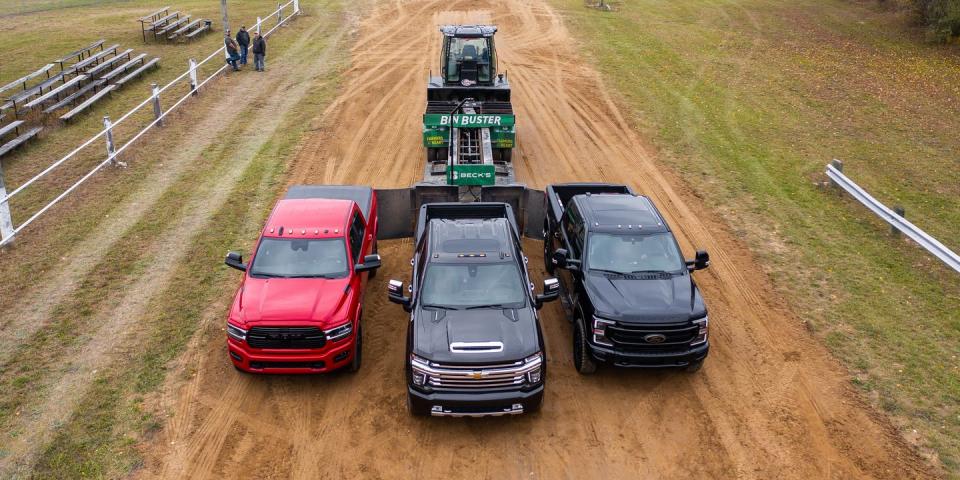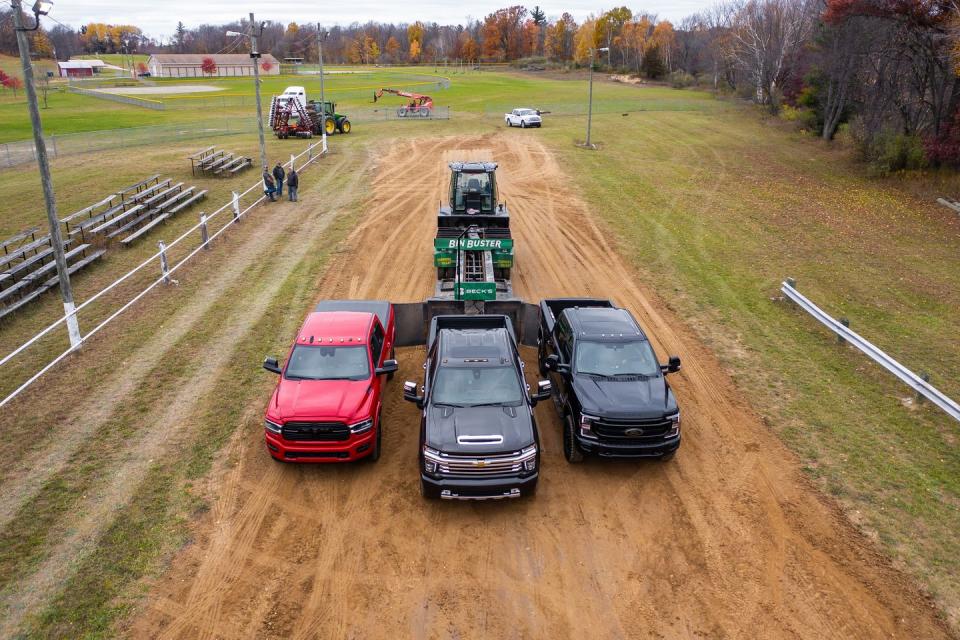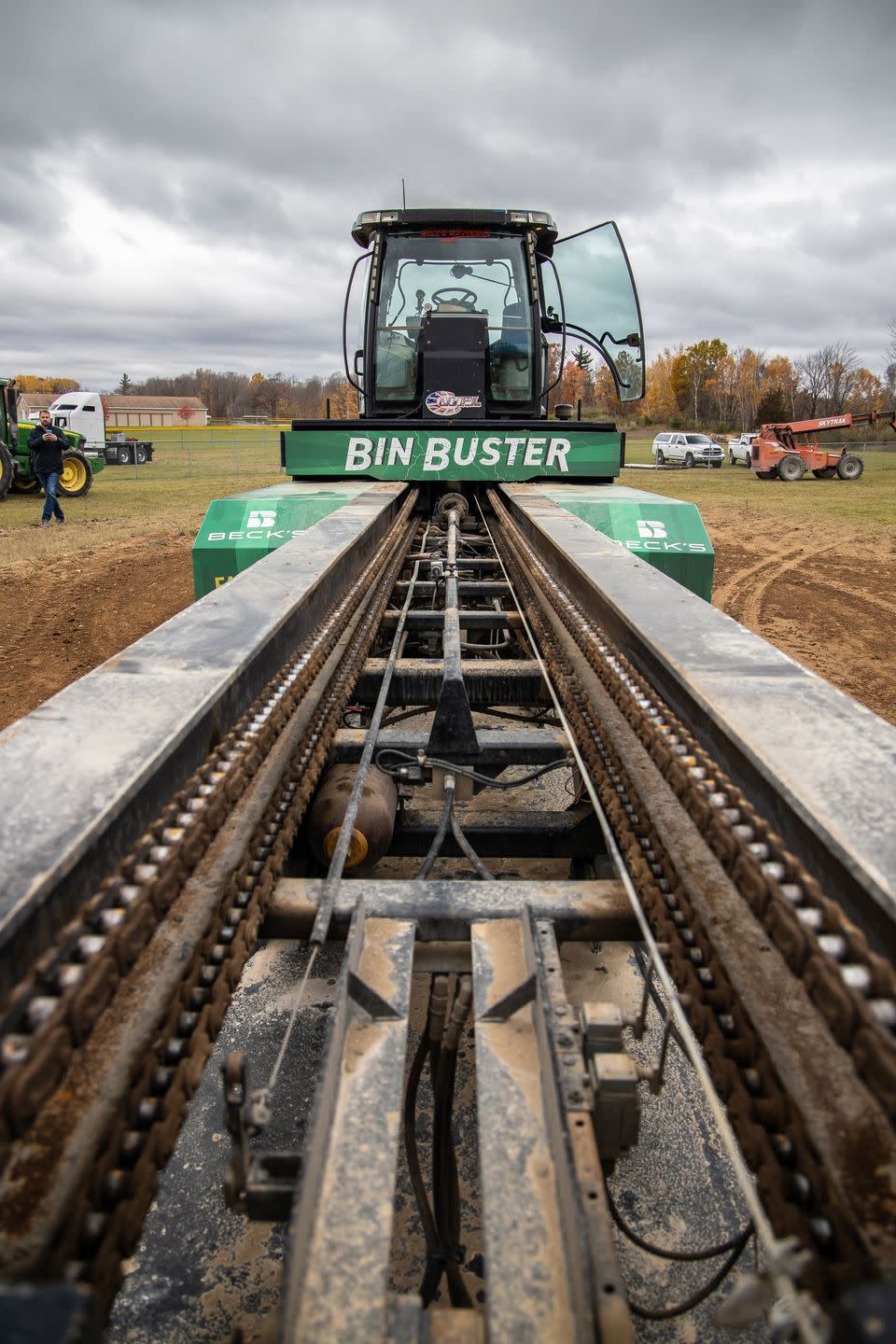Tested: 2020 Chevrolet, Ford, and Ram HD Pickup Pull-Off


From the February/March issue of Car and Driver.
Jeff Storey says the Chevrolet Silverado 2500HD, the Ford F-250, and the Ram 2500 are the wimpiest tow rigs his 16-ton drag sled has ever seen. In the hairy-chested world of heavy-duty pickup trucks, those are fightin' words. We came here—to the fairground in rural Blanchard, Michigan—to meet Storey and his tractor-pull sled in order to prove which American brand makes the most macho three-quarter-ton truck, but he just raised the stakes. Each truck is now vying to prove it's not the weakest tow rig ever to be hitched to the beast known as the Pioneer.
We're used to measuring a vehicle's fitness with quarter-mile times, but heavy-duty trucks are built for powerlifting, not sprinting. So for this round of the never-ending pickup battle, we decided to stage a tractor pull. Storey normally runs his sled behind tractors making as much as 10,000 horsepower. To slow those monsters down, he can load the Pioneer's weight-transfer box with up to a dozen 1800-pound lead bricks. We used just one lead slug for our test, and yet, when we hooked Storey's rig to the trucks, the weight behind the hitch was more than twice what the Ford and Ram are rated for and close to double the Chevy's rating. On the streets, this would be reckless. But on our closed course, the dirt surface acts as a fuse. The tires will break traction before the driveline is damaged.

Commercials for these trucks often look like they were directed by Hulk Hogan on a creatine bender. The truck does a lap around a steel forge with a freaking yacht in tow before a stack of girders is dropped in the bed, all while outrageous payload, towing, and torque figures flash on the screen. Until recently, Ford was the reigning braggart, with its Power Stroke diesel making 1050 pound-feet of torque. But then Ram topped it with a 2021 powertrain update that boosted its Cummins diesel to 1075 pound-feet. Hey, Bugatti, are you seeing this?

To find the best heavy-duty tugger, we procured three-quarter-ton trucks equipped with diesel engines and the most aggressive off-road rubber available from the factory. Then we hitched them to Storey's sled and stood on the accelerator pedals. We're going to settle this Calvin and Hobbes pissing match once and for all—or at least until the next generation of heavy-duty pickups arrives.
A tractor pull is a simple test, but there's more to it than meets the eye. The rate at which the weight-transfer box moves is dictated by a five-speed gearbox that's driven off the drag's wheels. As each truck pulls the sled, the heavy box slides forward, shifting the weight from the sled's wheels to its belly pan, which digs into the dirt. If that's not enough to stop a tractor in its tracks, a set of hydraulic arms can lift the sled's wheels off the ground, dumping the entire weight of the machine onto the pan. The farther you go, the deeper it digs. That's the complex part. Here's the simple bit: The longest pull wins. The drag sled doubles as a really long ruler, measuring the distance of each run.
The strategy of tractor pulling is straightforward: Shift into 4Lo, wait for the all-clear, then shove the right pedal through the firewall and, as Storey says, "Drive it to the kitchen!" That metaphorical cookhouse is 300 feet away. Make it that far and you've found the tractor-pull end zone, achieving what's known as a full pull. Before we started, Storey dialed in how quickly the weight-transfer box would move and determined when the Pioneer's hydraulic arms would engage to keep the full pull within reach. We made three runs with each truck and used the best pulls to determine the finishing order.

 Yahoo Autos
Yahoo Autos 